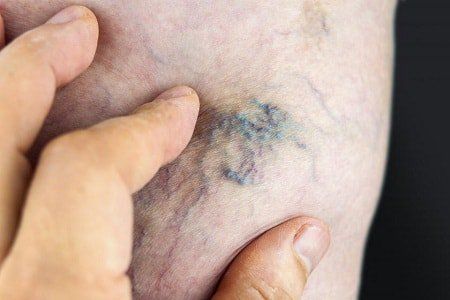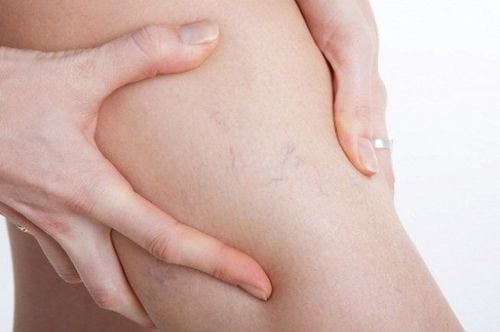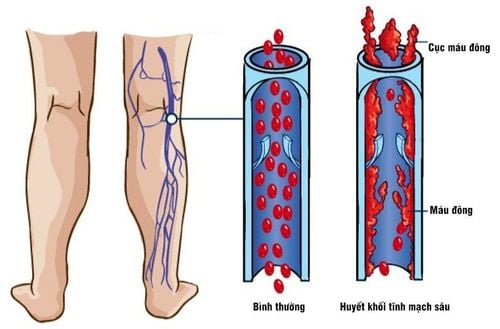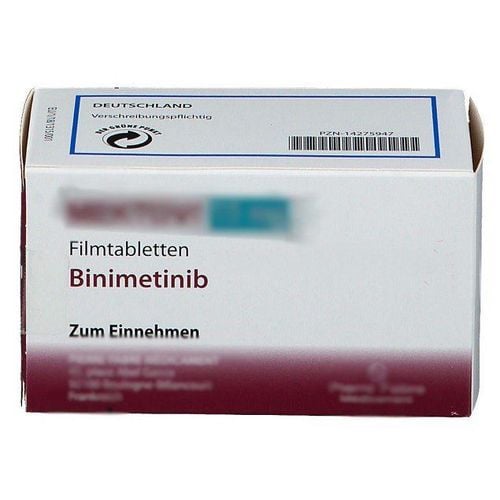This is an automatically translated article.
Symptomatic post-venous thrombosis syndrome of chronic venous insufficiency develops after deep vein thrombosis. This is a common, severe and costly complication that requires prolonged care and treatment. The combination of regurgitation due to venous insufficiency and venous hypertension due to thromboembolism is the pathophysiological basis of the post-thrombotic syndrome.1. What is post-venous thromboembolic syndrome?
Veins are blood vessels that carry oxygen-poor blood and waste products back to the heart while arteries are blood vessels that carry oxygen- and nutrient-rich blood to the body.Deep vein thrombosis is a condition in which a blood clot forms in a vein deep inside the body. In most cases, the blood clot usually occurs inside one of the deep veins of the thigh or lower leg.
The veins in the legs have small valves that help keep blood moving back to the heart. Deep vein thrombosis occurs when one or more of these valves is damaged or lost function, causing blood to accumulate upstream and form a thrombus.
Accordingly, post-venous thrombosis syndrome is a condition that can occur in people who have ever had deep vein thrombosis in the legs. This condition can cause chronic pain, swelling, phlebitis, and other symptoms in the legs to develop weeks or months after a venous thrombosis.
2. What causes post-venous thrombosis syndrome?
Since post-VTE syndrome is a consequence of the occurrence of a venous thromboembolism, the following conditions may increase the likelihood of developing a venous thromboembolism leading to a post-VTE syndrome, such as post-VTE. such as:Recent surgery that reduces mobility and increases inflammation in the body, which can lead to blood clots Medical conditions that limit mobility, such as injury or stroke Travel time by means of transport such as airplanes, long trains, limiting mobility Deep vein damage Inherited blood disorders that increase blood clotting Pregnancy Cancer treatment. However, when some of the following risk factors are present, a person is more likely to develop post-venous thrombosis syndrome:
Being overweight Having a venous thrombosis causing symptoms Taking a blood clot on the head knee instead of bottom There is more than one venous thrombosis Increased pressure in the veins of the legs Do not take anticoagulants after a venous thrombosis is detected.
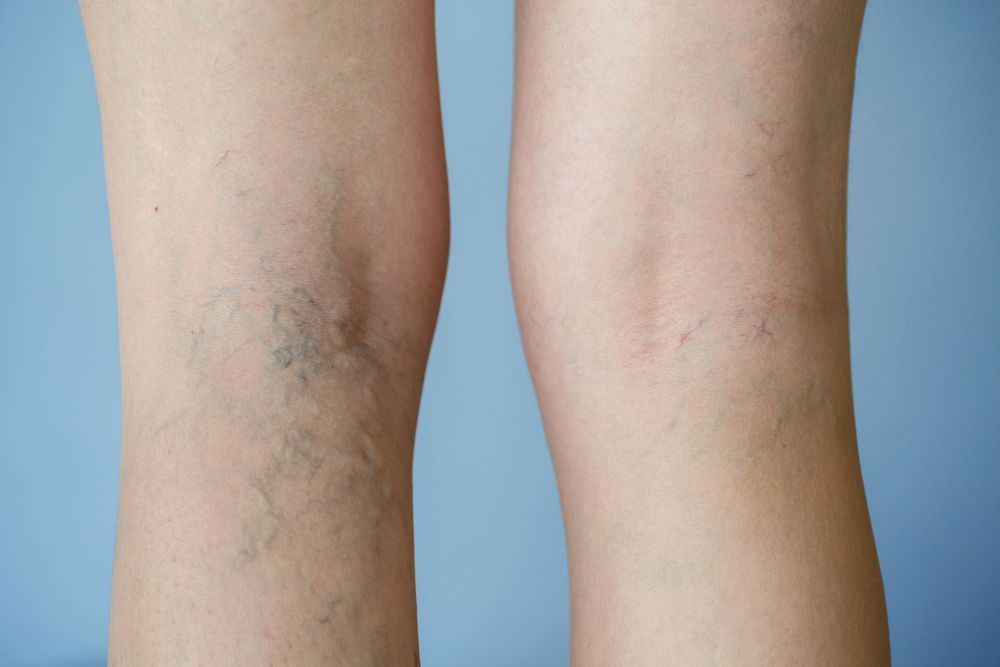
Hội chứng hậu huyết khối tĩnh mạch có triệu chứng của suy tĩnh mạch mãn tính
3. What are the symptoms of post-venous thromboembolism syndrome?
In some cases, post-venous thromboembolic syndrome causes only mild symptoms. In other cases, the condition can cause severe symptoms. Common symptoms of post-VTE syndrome that often occur in the same leg that has had a blood clot include:Feeling of heaviness in the legs Itching, tingling, or cramping in the legs Leg pain that gets worse when standing , improves after resting or elevating your legs Dilated leg veins Swollen legs Darkening or redness of the skin around your legs.
4. How is post-venous thromboembolic syndrome diagnosed?
Your doctor will identify post-VTE by taking your medical history, exploring your symptoms, including past history of VTE, and current risk factors.In addition, the patient may also need some tests, such as:
Doppler ultrasound of blood vessels, looking for problems with the deep vein valves in the legs. Blood tests to evaluate blood clotting function.
5. How to treat post-VTE syndrome?
Compression is the mainstay of treatment for post-venous thrombosis syndrome. This condition will help increase blood flow in the veins and reduce symptoms in the extremities.Specifically, the patient will be measured to choose the right compression stocking, worn regularly during the day, especially when walking a lot on legs that have had venous thrombosis. If the patient is immobilized in bed, an intermittent compressed air device can be used, which puts pressure on the veins in the legs according to the pump cycle.
Besides, proper skin care on the legs with post-VTE syndrome is also essential. Your doctor will instruct you to use products to lubricate the skin, moisturize the skin and prevent skin ulcers.
In some cases, the patient may need to use steroid creams or ointments for anti-inflammatory treatment of the skin. However, if skin sores on the legs have formed and are showing signs of infection such as discharge, they may require special treatment.
Some cases of severe post-VTE syndrome may need to consider surgery. This intervention is needed to remove the blockage in the main vein as well as to repair the valves in the leg veins.

Hội chứng hậu huyết khối tĩnh mạch được điều trị bằng vớ y khoa
6. How to live with post-VTE syndrome?
Symptoms of post-venous thromboembolism syndrome usually improve with treatment, but symptoms may sometimes not go away completely. However, they can be somewhat improved when the patient knows how to adapt to the following activities:Walk every day to increase leg muscle strength and general health Perform ankle flexion exercises Legs daily to strengthen leg muscles Do leg raises several times a day or whenever resting. Take good care of dry, itchy skin and any changes in the skin. Ask your doctor which skin moisturizer is right for you to use.
7. Possible complications of post-venous thromboembolic syndrome
Post-venous thrombosis syndrome can cause leg ulcers. Therefore, patients need daily wound care. Aspirin and a medicine called pentoxifylline can help with ulcer healing. If the ulcer becomes infected, antibiotics are indicated.In the case of severe ulcers that do not improve with medication and care, the wound may require surgery to remove damaged tissue.
In a nutshell, post-VTE syndrome is a condition that can occur in people who have had a history of deep vein thrombosis in the legs. This condition causes chronic pain, swelling, skin ulcers, and other symptoms in the legs. Compression therapy is the mainstay of treatment for post-VTE syndrome. In addition, patients need to combine lower extremity exercise measures to strengthen the legs, improve symptoms as well as reduce the risk of venous thrombosis in the future.
Please dial HOTLINE for more information or register for an appointment HERE. Download MyVinmec app to make appointments faster and to manage your bookings easily.




